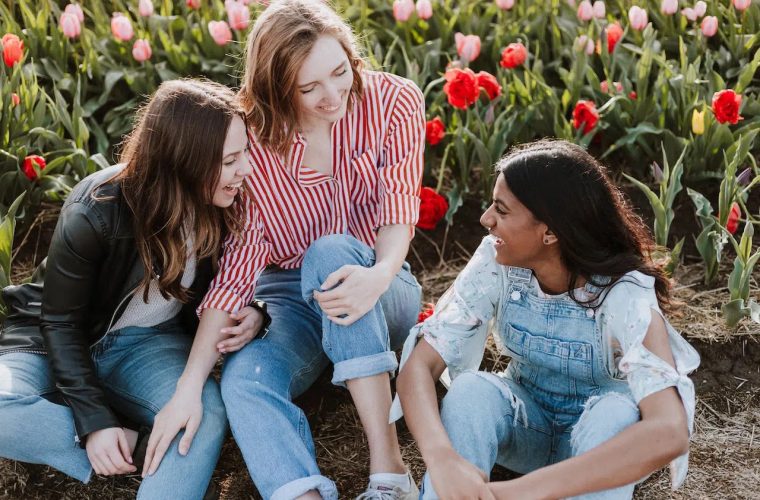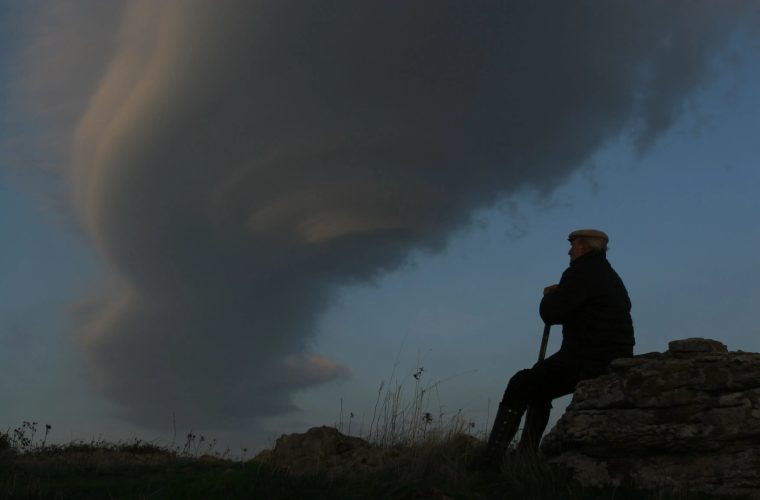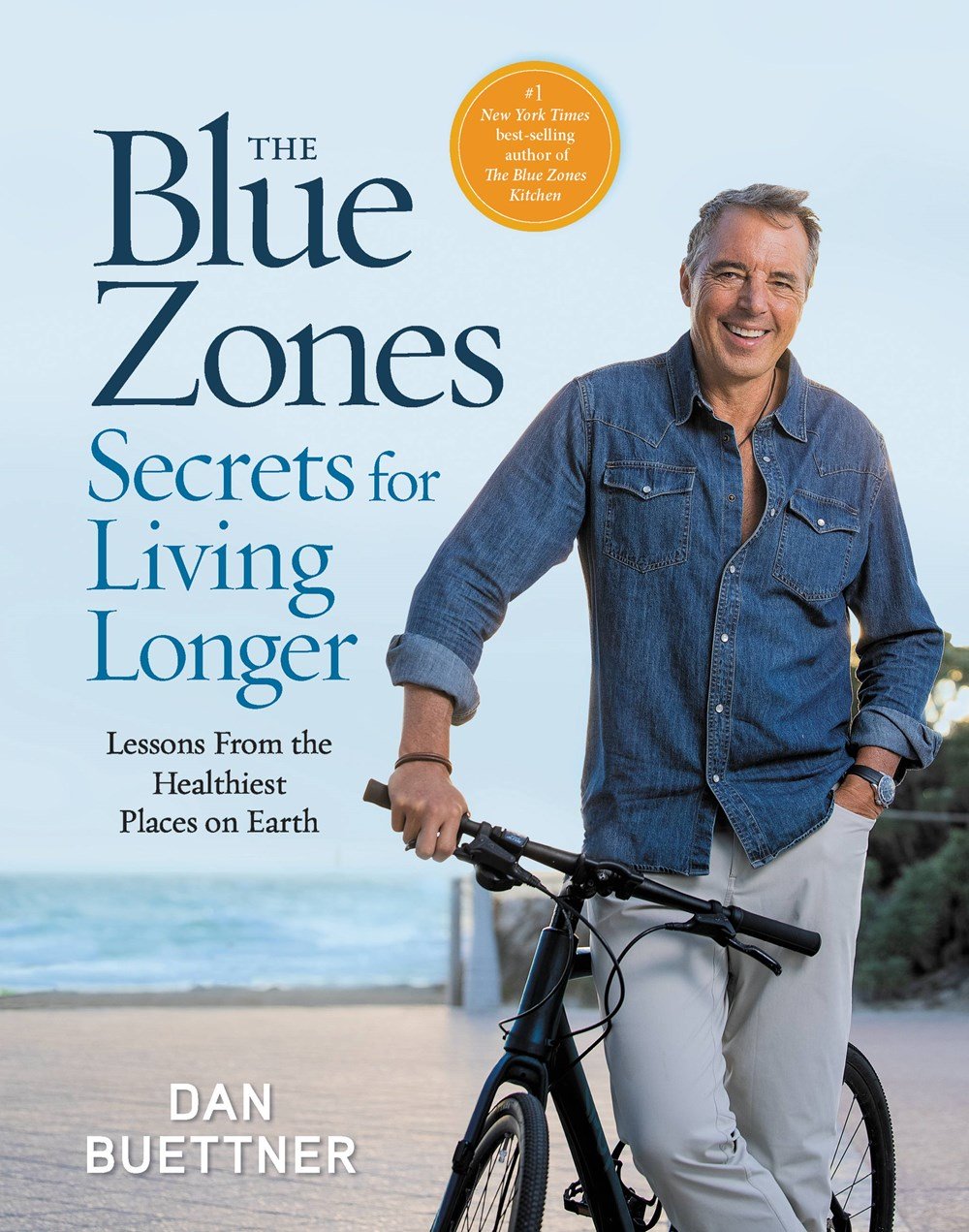I recently did a follow-up interview with Michael Osterholm, PhD, MPH, an internationally known infectious disease epidemiologist who has advised both Democratic and Republican Presidents. He is the Director of the Center for Infectious Disease and Policy at the University of Minnesota and a recent appointee to President-elect Joe Biden’s Covid-19 Advisory Board. Here, he offers straight talk about why it’s more dangerous to fly than the airline industry is letting on, the most important thing we should all stop doing, how you might visit your parents safely, and why the next three months may be the worst public health crisis we’ve seen in over 100 years.
Dan Buettner: Can you share the newest findings and developments about Covid-19 since our last conversation?
Dr. Michael Osterholm: One of the unheralded successes of this pandemic has been the up to 60 to 70% decrease in the case fatality rate in intensive care units from April and May through October and early November. That’s come from intensivists understanding the pathophysiology of this disease and basic treatments. We’re not talking about blockbuster drugs, not COVID-specific drugs, but things like how to oxygenate a patient and when you actually decide to intubate them and when you don’t, how to use steroids to prevent clots from developing and then having severe cardiac effects or brain damage. So that’s what has actually brought that number down in our case fatality rates.
However, now we’re hitting the case cliff which is the worst side of this. That is because we have so many cases now that our healthcare systems are so overwhelmed. It’s unlike anything we’ve ever seen. Remember, just today we’ve had 186,000 new cases reported, 2,800 deaths, and over 100,000 people hospitalized.
We’ve hit 200,000 cases a day on multiple days in the last week, and our healthcare systems are on the verge of collapsing. I’m not exaggerating in that term at all. And it’s because, in large part, we don’t have the healthcare workers who have the expertise or capability to handle this patient load. It’s unprecedented. So, when I say we’re at the most dangerous public health time since 1918, that’s really true. And we don’t even have an idea yet what the Thanksgiving travel family get-together impact will be because that won’t show up for another five to seven days. And then we worry that it will slingshot us into Christmas, which would be another surge on top of the surge.
So, Dan, this number is going to grow substantially. Right now, we’re at the same level of the number of deaths per days in this country that we were at back in April when, for two and a half weeks, COVID-19 was the number one cause of death in the country every day. We’re back there now.
DB: What are we doing wrong?
MO: As powerful as this virus is and what it does to us, we still have a great deal of power in our own control. I have boiled it down to one simple thing: Stop swapping air. Unless you are in a bubble with someone with the same protection and lack of exposure, like with your spouse or your partner or your neighbor that you only go out for walks with, you’ll keep putting yourself at risk if you don’t do this. The fact is that 50 million Americans traveled for Thanksgiving, which is only 10% below what it was a year before. There were less airplane flights and more cars trips, but the bottom line is people still got together and had multi-family events.
DB: How do you feel about dining outdoors?
MO: It’s fine as long as you have the distance. That’s the challenge there. Outdoors is the ideal place to be to share time and place with a person, but it’s got to be at a distance to dissipate the virus.
Remember, the virus is all about an infectious dose, which is a function of time and concentration.
So, if I’m there for two hours with a much lower concentration of virus in the air, I get the same hit as somebody spending much less time but a higher volume of the virus in the air. At most outdoor settings, if you’re 8 to 10-feet away, you’re likely to have limited exposure at most over time.
So, I think that’s great, but if you’re at a regular table for a meal with people, which again, means you’re talking and eating and you don’t have a face cloth covering on, then you do run the risk even outdoors. And we have had outdoor events clearly that have contributed to transmission, where people were close together and eating in that type of a social setting.
DB: We get a lot of questions about aging parents at Blue Zones. In fact, that was a big follow-up question from our first interview with you. If I want to see my aging parents and I’m willing to get a test and I’m willing to quarantine, what’s the safest protocol to follow?
MO: Well, number one is that everything is about the time. And what I mean by that is this: The average person who is exposed will become infected and infectious in about three to seven days, meaning you may not get ill till your fifth to seventh day, but two days before that you became infectious. And so, I feel pretty confident that if you’ve quarantined for seven days and you haven’t had any exposures and you’re tested at that point and you’re negative, then it’s very likely that you’re really negative. The problem we’re seeing is that people will quarantine for seven to 10 days, will get on a plane, but then will stop and get together with people on the way to mom and dad’s house.
Remember, mom and dad aren’t really at risk during that first two or three days because even if you got infected while traveling there, you’re not going to be infectious until day three or day five. But if you stay for more than a couple of days, you then still pose a risk to those aging parents. So, it’s all about how you do this.
DB: So, for the first three days after being exposed on a plane, even if you’ve tested positive, you wouldn’t be infectious.
MO: You wouldn’t be infectious and in most cases, you wouldn’t even test positive until day three at least. So, if you’re there for a day, then I think you’re quite safe. Even if you’re infected, you’re not going to transmit to them. But if you get anywhere near day three, then you run the risk that even if you don’t have symptoms, you can transmit the virus to them.
DB: What do you think about flying? How dangerous is it?
MO: I think, first of all, there is more transmission with flying than the airline industry has led on. And we have an increasing number of outbreaks that we actually can trace back to airplanes. Now, what that absolute risk is, I can’t say and we don’t know that, but what I can say is that it’s never just about the flying. It’s getting to the airport, being in the terminal, waiting at the gate, boarding the plane, getting off the plane, getting your baggage, and all that. So, it’s the entire experience that becomes a problem. And there we do see an increasing number of cases. Can we say it was the airplane ride itself? No, it’s the entire experience. Today, the last thing I’d want to do is be riding in a cab with someone for any distance at all.
DB: How about an Uber? Would you go in an Uber even if there’s nobody in it besides you, but there might have been a passenger right before you?
MO: No, I wouldn’t have a problem with that.
DB: Okay. So, let’s say an all-day family reunion with 15 people of different ages in an enclosed space would be pretty risky on a scale of one to 10. How dangerous do you think flying from Minneapolis to Miami is if you’re rating it on a scale from one to ten?
MO: I can’t really tell you that. We don’t know. It’s all dependent on whether you have somebody on that flight sitting near you that is infected and infectious. That risk factor is surely going up in terms of just the population itself. Mayo Clinic last week reported 975 healthcare workers in their system that are all with COVID. Virtually all it was acquired in the community and that is such a big increase. What that represents is the background transmission out there right now that is really a challenge.
DB: How is COVID impacting life expectancy and will getting this vaccination help us live longer and better? Should we be afraid of it?
MO: Because so many of the individuals are older who have died, it probably has less impact than something like swine flu that preferentially kills young adults, but overall, it’s still sizeable. Some recent estimates show it may have reduced U.S. life expectancy at birth for 2020 by one year.
MO: As far as the vaccine, I think that’s the light at the end of the tunnel. I think these vaccines are exciting and they hold great promise. My big concern is that people won’t take them because of fear of the vaccines based on a lot of misinformation that’s out there. And I understand why, because it’s a new vaccine platform — mRNA. It came through something called Operation Warp Speed. All this new terminology makes people pause and think, well, wait a minute, am I going to be experimented on here? And I think that we have to address those concerns, and we have not.
As a nation, we’ve done a great job bringing these vaccines forward from a research and development standpoint, but that last mile is a big disconnect right now. And the data says that well over 50% of Americans right now wouldn’t take this vaccine if it were available. That’s a huge problem.
DB: If people take it, what is your best guess about when we can return to semi-normal life and go out again?
MO: If we see a large segment of our population take the vaccine? Also, we support vaccination around the world because that’ll always leak the virus back into the United States or any other country if it’s occurring in very high levels in low and middle-income countries. But I think with a combination of our program and what’s happening around the world, then by mid to late summer we could see a huge change where case numbers drop precipitously, and we feel safe again to go into public spaces. If the uptake of the vaccine is even higher than what we might anticipate with promotional efforts, then that could even be sooner.
DB: That would be awesome. It leads into the penultimate question, which is when will the vaccination be available to most of us?
MO: I think for most it’s probably going to be in the first to the second quarter of next year. The first cut recommendation came out yesterday for healthcare workers and for nursing home and long-term care attendees. I think that the next cut in January is likely to include older populations and underlying risk factors, so that could include everyone over 65 as well as some people under 65 who have underlying health problems. The whole great hope is that we’ll have enough vaccines for everyone that wants it by the end of the second quarter.
DB: So, that’s almost summer then.
MO: Almost, but if we get it earlier and get uptake, then that will be excellent. If we don’t get uptake, then we might have a vaccine but still not see a tremendous impact.
Dr. Osterholm is Regents Professor, McKnight Presidential Endowed Chair in Public Health, the Director of the Center for Infectious Disease Research and Policy (CIDRAP), Distinguished Teaching Professor in the Division of Environmental Health Sciences, School of Public Health, a professor in the Technological Leadership Institute, College of Science and Engineering, and an adjunct professor in the Medical School, all at the University of Minnesota.
In his 2017 book, Deadliest Enemy: Our War Against Killer Germs, he correctly foretells a global pandemic and offers the best strategy for fighting it now and avoiding it in the future. Dr. Osterholm has been an international leader on the critical concern regarding our preparedness for a global pandemic. His invited papers in the journals Foreign Affairs, the New England Journal of Medicine, and Nature detail the threat of an influenza pandemic before the recent pandemic and the steps we must take to better prepare for such events.





